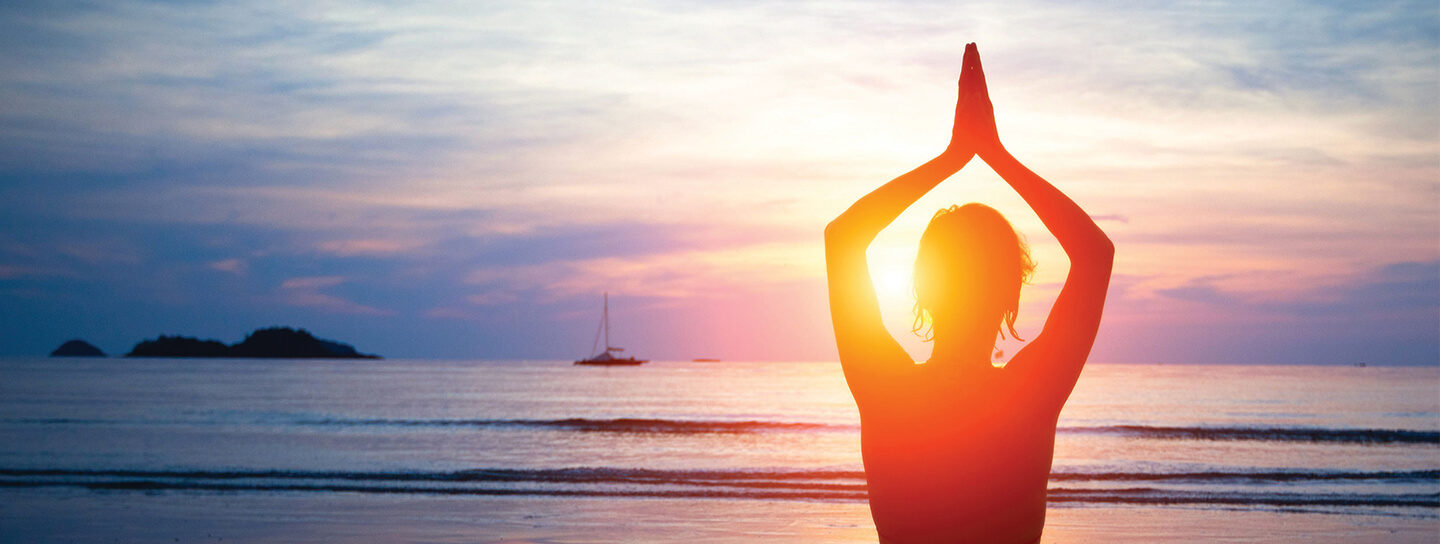If you ask anyone to define Yoga you will get many answers and many of them will be intrinsically correct. Some will say that Yoga is a system of physical exercises. It can also be a form of meditation and spiritual awakening. Many think it is all those complex asanas where the body is contorted into complex postures. Others believe it is a form of breathing and meditation that can help in gaining peace of mind. Finally there is the new controversy about whether Yoga is a religious system and therefore essentially a Hindu one.
Evolving over millenniums Yoga is what you want it to be. You gain what you seek in this surprisingly generous and open system of mind and body discipline.
Most of us are not heading to the Himalayas to gain self realisation. We are also not keen to become yoga masters who can stand on their heads or use their bodies like acrobats. We are not into the esoteric system of trying to raise our kundalini or even levitate. Let’s leave all that to the yoga masters. Most of us just want a simple system of exercises and meditation to help us get through the day. Yoga offers a form of body and mind discipline that is a practical way to cope with life.
Yoga has been included in not just Hinduism but also Buddhism and Jainism. Look at the way Gautama Buddha and Vardhaman Mahavir sat in the padmasana while they meditated, that is a basic yogic posture. Padmasana is the asana of dhyana that leads to concentration and greater consciousness. Lord Shiva who is considered the great yogi sits in the padmasana. One of the oldest images of this posture can be seen on a seal from Harappa of a figure wearing a tall head dress sitting cross-legged in the dhyana posture. So it is possible that nearly five thousand years ago, before the Rig Veda had been composed, Indians were following some system of yoga.
No path would have lasted this long if it did not have clear benefits for the physical and mental health of people. Yoga is a system that does not propagate any religion, it is open to everyone and it generously offers you peace of mind and bodily healing.
One of the essentials of Yoga is the presence of a teacher. Yoga cannot be learnt by reading books or watching asanas on television. Every person needs the asanas and breathing exercises to be fashioned according to their age and physical health. The breathing exercises need guidance and practice and for the physical movements there are the right and wrong way to do an asana. So it is best to learn yoga from an experienced teacher and then continue on your own. We would suggest you get a teacher who has been recommended by others.
There are many forms of yoga depending on what you want to gain from the process. There are Raja Yoga, Ashtanga Yoga, Gyana Yoga, Hatha Yoga. The asanas and breathing exercises are part of Hatha Yoga, called the yoga of force. It is exercises with a spiritual and meditative core as the asanas are carefully regulated unlike the frantic, breathless, sweaty sets that are part of the modern regimens.
To gain the most from yoga you have to make a commitment to it. First learn it properly and then continue its practise regularly. Yoga does not promise any miracles but over the months you will sense its long lasting benefits of a healthier body and a calmer and happier mind.


